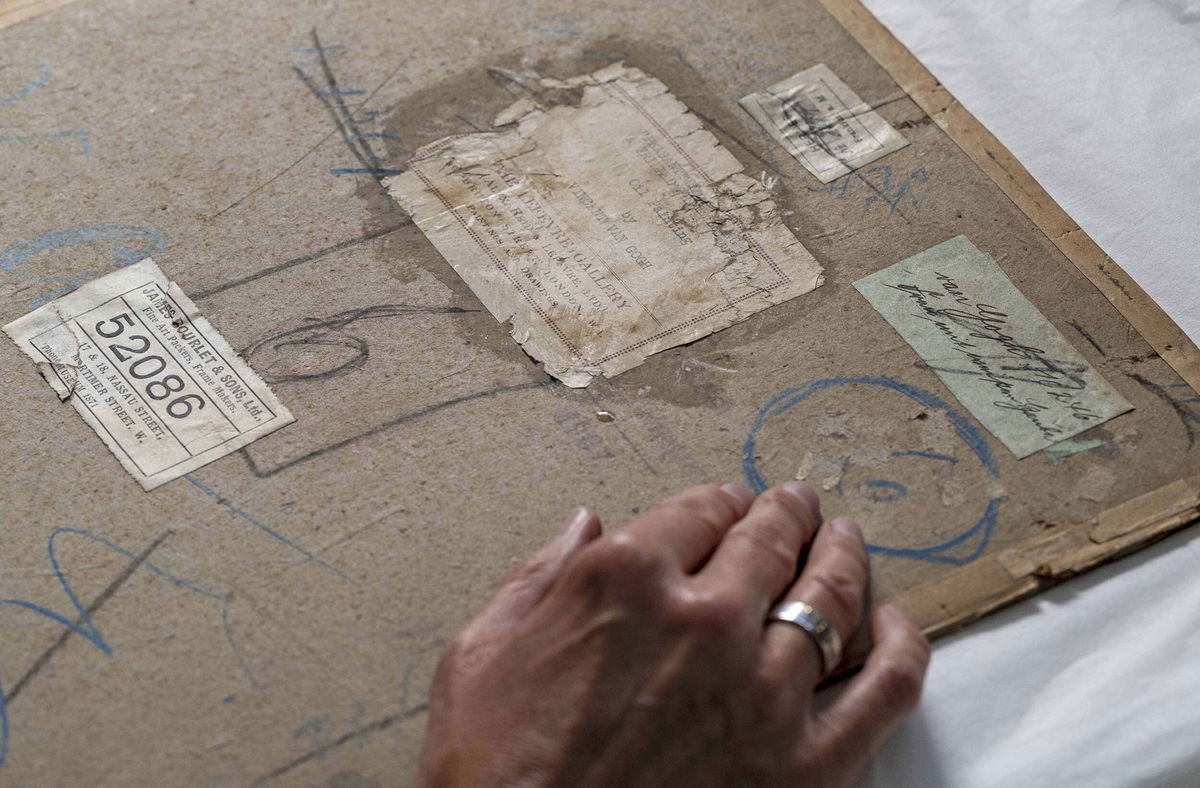Hidden Van Gogh self-portrait found behind another painting

Research is ongoing as to how the glue and cardboard can be delicately removed without harming "Head of a Peasant Woman."
Amarachi Orie, CNN
A hidden self-portrait by Vincent van Gogh has been discovered behind one of his paintings, covered by layers of glue and cardboard for more than a century.
The image was found when art conservators took an X-ray of Van Gogh’s 1885 “Head of a Peasant Woman” painting ahead of a forthcoming exhibition. They discovered the concealed image at the back of its canvas hidden by a sheet of cardboard, according to a press release from the National Galleries of Scotland (NGS).
Experts say the revealed artwork is believed to have been unknown until now.
“Moments like this are incredibly rare,” said Frances Fowle, senior curator of French art at the NGS, in the press release Thursday. “We have discovered an unknown work by Vincent van Gogh, one of the most important and popular artists in the world.”
The Dutch master often re-used canvases to save money, turning them around to work on the reverse side, the NGS said.
The underlying self-portrait is thought to have likely been made during a key moment in Van Gogh’s career, when he was exposed to the work of the French impressionists after moving to Paris.
The “utterly compelling” X-ray image shows “a bearded sitter in a brimmed hat with a neckerchief loosely tied at the throat. He fixes the viewer with an intense stare, the right side of his face in shadow and his left ear clearly visible,” according to the release.
While the condition of the actual self-portrait is unknown, if it can be uncovered, it is expected to help shed a new light on the renowned artist.
The process of removing the glue and cardboard will require delicate conservation work. Research is ongoing as to how this can be done without harming “Head of a Peasant Woman.”
The painting, which shows a local woman from the town of Nuenen in the south of the Netherlands, where the artist lived from December 1883 to November 1885, came into the possession of the NGS in 1960 as a gift from an Edinburgh lawyer.
It was probably around 1905, when “Head of a Peasant Woman” was lent to an exhibition at the Stedelijk Museum, in Amsterdam, that the decision was made to stick the canvas down on cardboard prior to framing, according to the press release. The NGS added that, at the time, “Head of a Peasant Woman” was likely considered more “finished” than the Van Gogh self-portrait.
The painting changed hands several times until it went to Scotland in 1951.
The X-ray image can be seen publicly for the first time through a specially crafted lightbox when it takes center stage at the “A Taste for Impressionism” exhibition between July 30 and November 13 at the Royal Scottish Academy, in Edinburgh.
It is not the first time that paintings by famous artists have been discovered beneath other works.
Earlier this year, it was revealed that an intriguing image of a Madonna and Child had been discovered beneath the paint layers of a $40-million Botticelli painting.
And artificial intelligence, advanced imaging technology and 3D printing was used to uncover a nude portrait of a crouching woman hidden beneath the surface of a Pablo Picasso painting last year.
The-CNN-Wire
™ & © 2022 Cable News Network, Inc., a WarnerMedia Company. All rights reserved.
